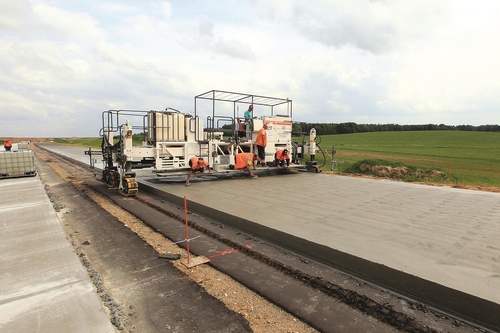Minsk ring road has long groaned under its weight of traffic, being seven-fold over capacity, inspiring the construction of a second loop

At the construction of the Minsk second ring road. Photo BelTA
Around a year ago, the President inspected a section of the new road under construction and was extremely dissatisfied by the pace of work. He urged that all 162km must be operational by January 1st, 2017.
We all know that high quality roads are essential for a transit country, which has inspired the President’s keen eye on international transport corridors and motorways connecting Minsk with regional centres. The past three years have seen much construction and reconstruction of the road network, with the second ring road being among the major projects.
Belarus’ Minister for Transport and Communications, Anatoly Sivak, recently reported to Mr. Lukashenko on the project, as well as on the fulfilment of other instructions. He noted, “We should finish construction of the first stage of the ring road, from Ostroshitsky Gorodok to the M6 (Grodno to Vilnius) this year. While saving money we must retain quality. This year, we’ve managed to reduce the construction cost by Br200bn.”
Mr. Lukashenko warns that it’s good to save on costs but that ‘a miser pays twice’, so false economies are a waste of time. Where the roadbed can sit on existing sections, it should do so, but quality is paramount.
The meeting also discussed the construction of the second take-off runaway at Minsk National Airport. The Minister assured that the mistakes of past years won’t be repeated, when construction contracts were signed without design documentation. Meanwhile, the network of electronic toll roads is to be expanded to include a section of the M5, between Zhlobin and Gomel.
Mr. Sivak believes that our co-operation with Austrian KapschTrafficCom AG on the BelToll system is a bright example of public-private partnership. Carriers’ major problem is the unpredictability of being able to pay fees for the BelToll system. In a perfect world, they should be able to pay online, as with mobile communication services. The Transport and Communications Ministry has taken into account all proposals and remarks and is aiming to introduce amendments to the investment treaty, to regulate the requirements of the toll road system operator.
By Vladimir Velikhov











